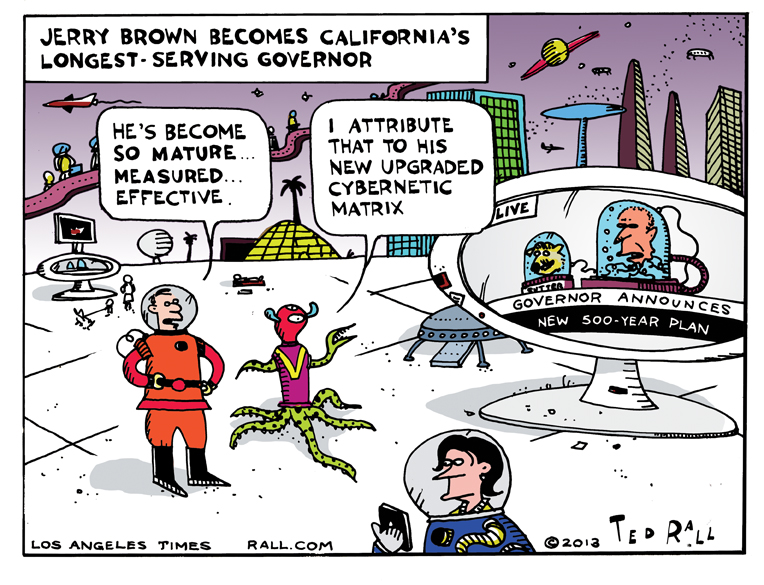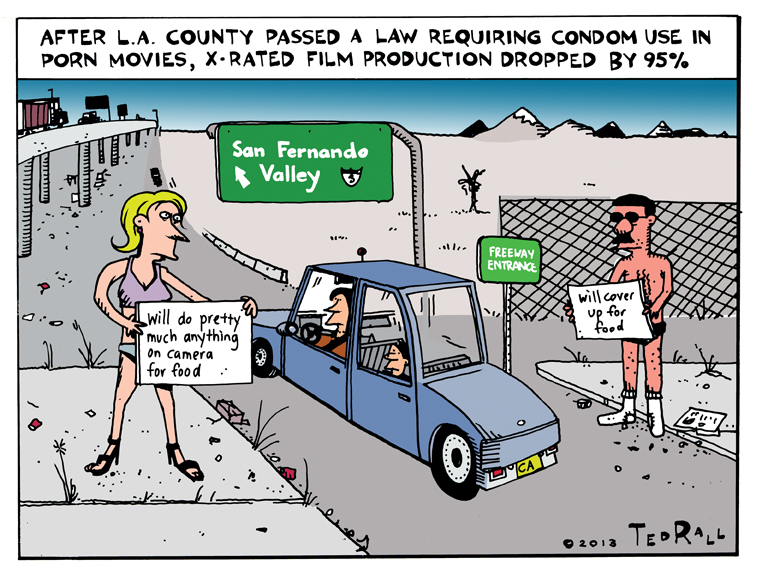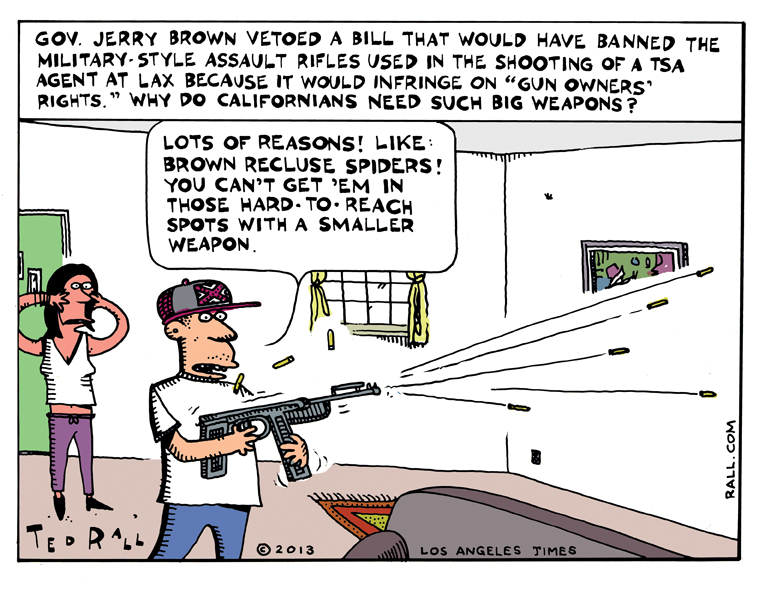I draw cartoons for The Los Angeles Times about issues related to California and the Southland (metro Los Angeles).
This week:
This week marks an important date for an iconic American politician. No, I’m not talking about the 50th anniversary of the assassination of JFK. Jerry Brown, 75, is about to become the longest-serving governor in California history.
The former “Governor Moonbeam,” formerly a lightening rod for his alleged 1970s-era flakiness (though, in fairness, he didn’t deserve it), is now widely viewed as effective, mature and effective in Sacramento. Though I have taken issue with some of his policies, most notably kowtowing to well-connected big energy companies, including firing a conscientious regulator, I have generally been relatively impressed.
Considering my view of most politicians — they’re lying scum — “relatively impressed” is as good as it gets.
It’s hard to believe, after this long strange journey, that the phrase “Governor Brown” not only no longer shocks, but is something we expect, like the setting of the sun in the west. Californians like him, his policies, not as much.
To mark Brown’s historical moment, I drew from “The Jetsons” and “Futurama” for a tongue-in-cheek look at what a perpetual Brown governorship might look like. Cryogenically preserved in a jar, with cryogenic Sutter the Corgi at his side, a slightly dystopian California’s future Dear Leader rules benevolently, issuing diktats and 500-year plans (get it) from a telescreen near you.
I, for one, welcome our future non-corporeal overlord.




